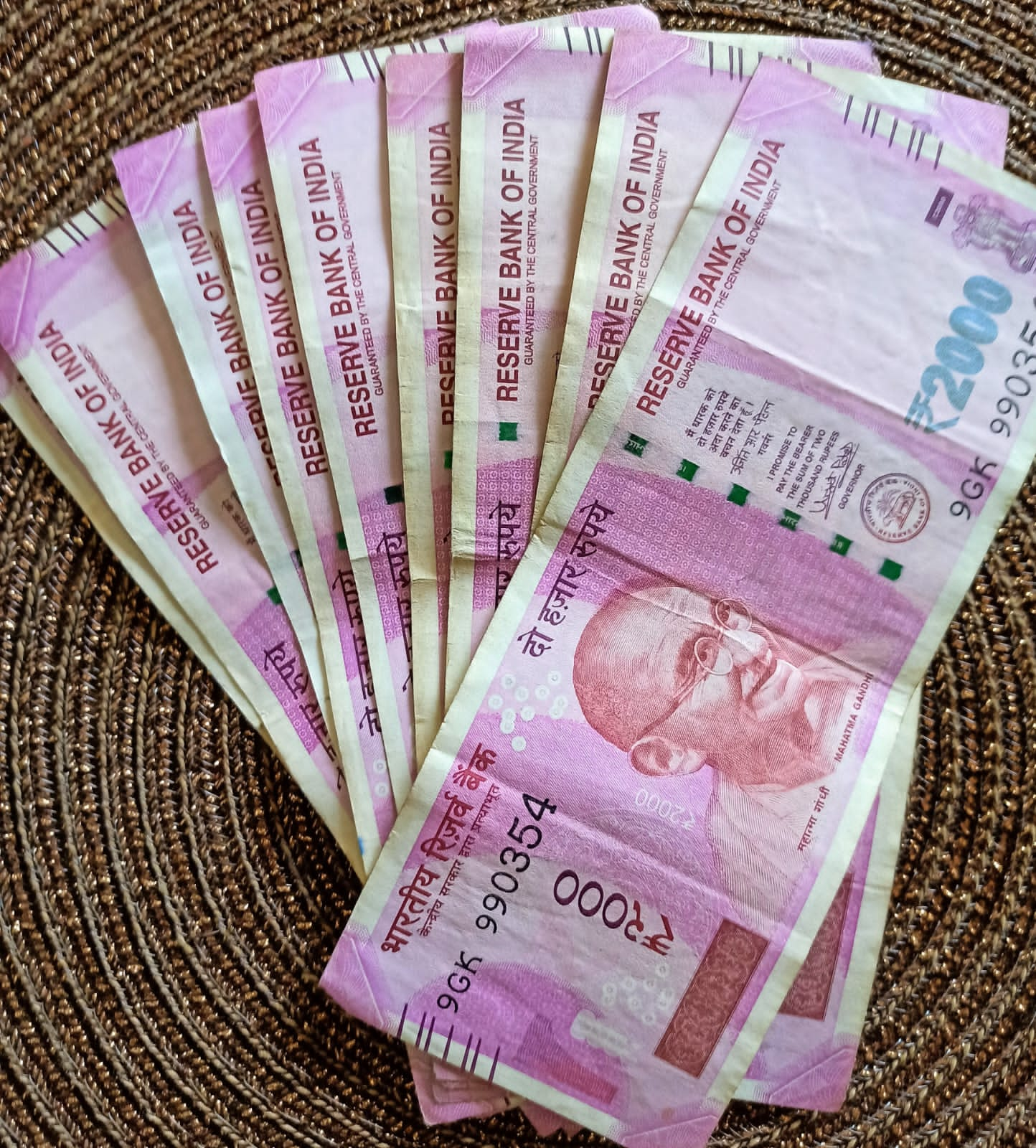NEWS
Day 1 of Rs 2,000 note withdrawal: No rush, different rules
Small queues at bank branches and confusion over requirement of officially valid identity cards marked first day of exchanging junked Rs 2,000 notes.
Small queues at bank branches and confusion over requirement of officially valid identity cards marked first day of exchanging junked Rs 2,000 notes.

Small queues at bank branches and confusion over requirement of officially valid identity cards like PAN or Aadhaar marked the first day of exchanging junked Rs 2,000 notes.
No rush was reported from anywhere. Even before the 131-day window provided by the Reserve Bank of India (RBI) to exchange the Rs 2,000 banknotes, customers had come to deposit the withdrawn currency note anticipating a mad rush like what happened following demonetisation of Rs 500 and Rs 1,000 notes in November 2016.
“Unlike the demonetisation in 2016, we do not expect a big rush this time. We have provided for special counters for depositing or exchanging the Rs 2,000 notes as a precautionary measure,” said an official in State Bank of India (SBI).
As part of the withdrawal exercise, the RBI has set 23 May as the first day for exchange of Rs 2,000 notes and 30 September as the end date. Besides, the currency note will remain a legal tender.
While some banks like SBI, Canara Bank and Punjab National Bank (PNB) have made it clear that no form or requisition slip or identity proof is required for exchange of Rs 2,000 notes up to a limit of Rs 20,000 at a time, many banks took an opposite stance.
For deposits of Rs 2,000 notes, there is no specified limit but it will be subject to compliance with extant KYC (know your customer) norms and other applicable statutory guidelines.
An official at a branch of Bank of India said that there was initial confusion over requirement of identity proof but after seeking clarification from the zonal office, it became clear that there was no need for it.
Axis Bank asked customers to fill a form for exchange of currency notes and furnish identity proof. Non-account holders of the private bank had to submit a copy of the identity proof . Many other private banks followed a similar procedure.
When we visited a branch of Yes Bank in Bhubaneswar, we were told that identity proof was required for those who wanted to exchange more than two Rs 2,000 notes. Yes Bank CEO Prashant Kumar clarified that this system was followed by the bank for any exchange of notes totalling more than Rs 5,000 and was being extended now to the Rs 2,000 notes.
For the banks, the withdrawal of Rs 2,000 notes on the first day was a non-event and it was business as usual. While there may be an increase in traffic during the course of the period till 30 September, nobody expects that it would be a mad rush like the 2016 demonetisation days.
Besides having a window of four months, Rs 2,000 notes account for just 10.8% (Rs 3.6 lakh crore) of total currency in circulation compared to 86% of the demonetised notes of Rs 500 and 1,000 in November 2016.
People are also finding non-banking routes to dump the Rs 2,000 notes, including buying gold, luxury watches, premium branded goods and daily essentials.
